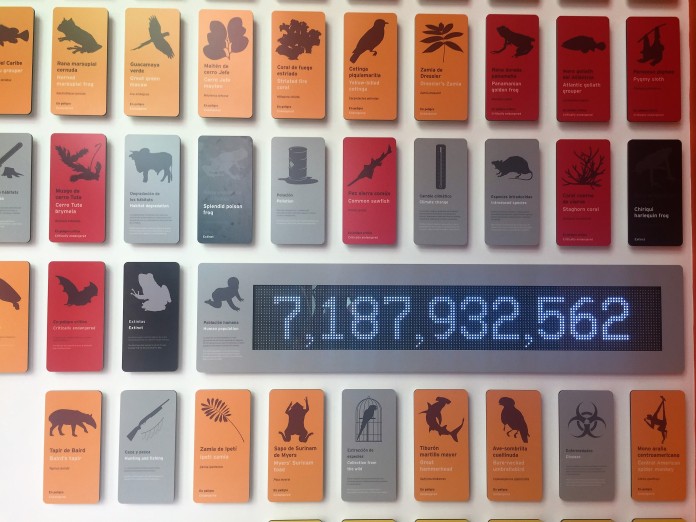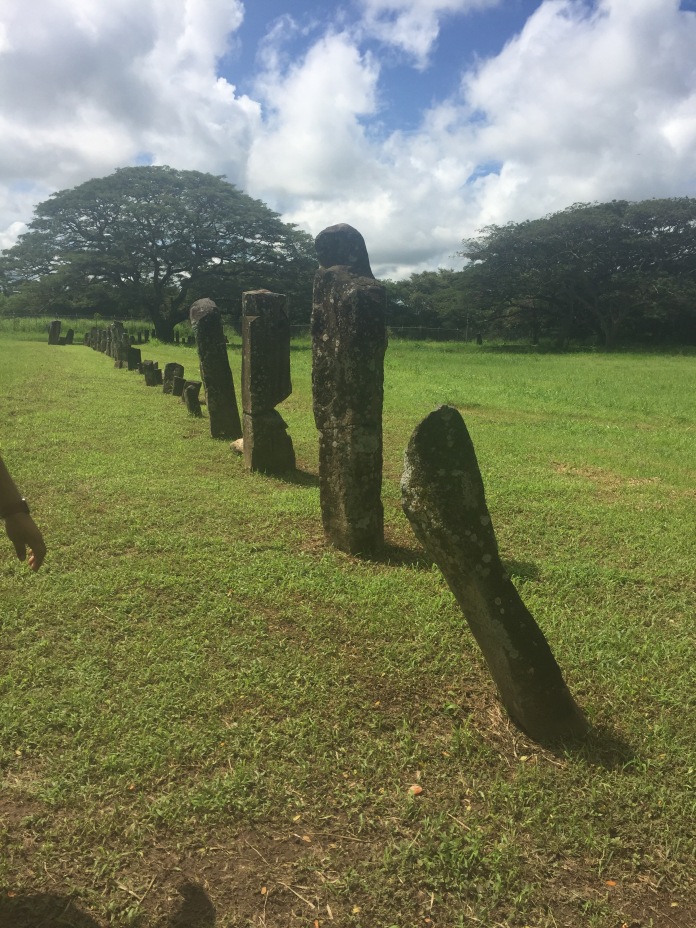There are some touristy parts of Panama that I avoid. The canal never really interested me much though I’ve been twice now. But there is a hidden gem in Panama City that had gotten rave reviews so I had to check it out. That hidden gem is the BioMuseo!
The BioMuseo, or Bio-Museum, was architecturally designed by Frank Gehry who is known for his innovative and often grandiose designs. It is all about the biodiversity of Panama; el Puente del mundo (the bridge of the world). If you’re ever in Panama I highly recommend coughing up the $18 non-resident price (or $10 if you’re a resident aka a PCV) and visiting the museum. From albrook mall it’s just a $4 taxi! Okay, now that we’re through the actual costs, what is there to see? When you enter the museum, you’re greeted by exhibits explaining what biodiversity is and denoting species that have been discovered in Panama. Then there’s a wall of all the species that exist in Panama. The ones in red are in danger of extinction while the ones in black have already gone extinct. The plaques in gray are the things that contribute to species extinction. The biggest threat? Humans.
From there you move into a movie theater where screens cover the walls, ceiling, and even floor! Here you’ll watch a short film about the biodiversity of Panama and, if you’re lucky, there will be a school group there so you can hear the guide explaining things and watch kids flap their arms like birds when cued. After the film, you step out into rocks and fossils! This was by far one of my favorite parts because I really enjoy geology AND I solved a mystery that’s been bugging me for a while! Backstory: wayyyyy back in the beginning of my service I hiked out to some petroglyphs near my site (you can read the blog post about them here) and I was really confused by this carving of what appeared to be an elephant. Now flash forward to me wandering around looking at fossils and pre-historic animals of Panama. Suddenly, I see it! Cuvier’s Mastodon—a giant species that was related to elephants and lived in the Americas until roughly 11,000 years ago. The carving must not have been an elephant, but a mastodon! Which also means that those petroglyphs are crazy old.
From there you learn about animals that roamed Panama and then move forward into learning about the history of Panama—the people and cultures that pre-date us and helped to form what we have here today. But I don’t want to spoil it all for you; you’ve got to see it for yourself! And if you come after December of 2019 you’ll be able to check out a new exhibit—the aquarium!

![IMG_2883[1] IMG_2883[1]](https://gabbyssingalongblog.files.wordpress.com/2017/07/img_28831.jpg?w=440&resize=440%2C330&h=330#038;h=330)


